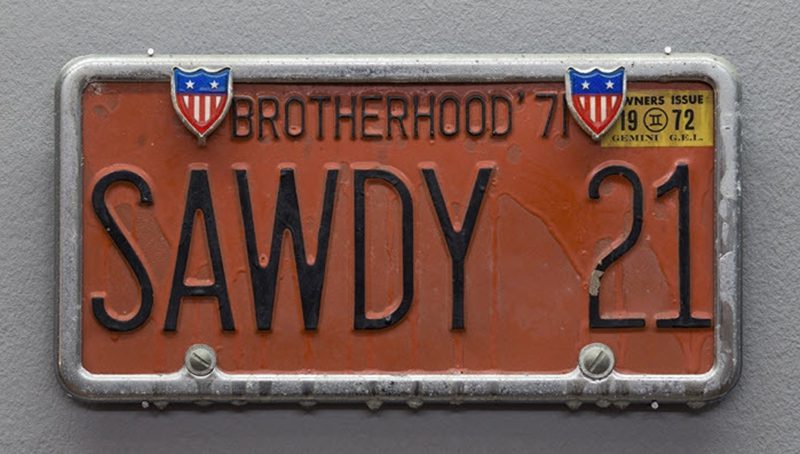ART-PRESENTATION: Edward & Nancy Kienholz
 Edward Kienholz created powerful work that reflected upon contemporary social and political issues of late 20th Century America. He created life-size three-dimensional tableaux and immersive environments, composed out of the discarded detritus he found at yard sales and flea markets. From 1972 onward, he worked almost exclusively with his fifth wife, the artist Nancy Reddin Kienholz, who played a significant role in the conceptualization and fabrication of their later works.
Edward Kienholz created powerful work that reflected upon contemporary social and political issues of late 20th Century America. He created life-size three-dimensional tableaux and immersive environments, composed out of the discarded detritus he found at yard sales and flea markets. From 1972 onward, he worked almost exclusively with his fifth wife, the artist Nancy Reddin Kienholz, who played a significant role in the conceptualization and fabrication of their later works.
By Dimitris Lempesis
Photo: Sprüth Magers Gallery Archive
The exhibition “Edward and Nancy Kienholz: A Selection of Works from the Betty and Monte Factor Family Collection”, encapsulates both the friendship and patronage between the artist and two of his most steadfast collectors, Betty and Monte Factor. Controversial, graphic and always critical, Ed Kienholz’s installations and sculptural assemblages reproduce in tableaux form the ugly truths of modern life often bypassed by artistic representation. Large-scale, freestanding environments built out of materials salvaged from junkyards and alleyways survey subjects such as illegal abortion, prostitution, racism and mental illness. In 1953 Kienholz moved to Los Angeles and began to develop his interest in art, transitioning from his initial fascination with painting to woodwork. In August 1956, he founded the short-lived NOW Gallery. In 1957 he cofounded the Ferus Gallery with curator Walter Hopps, who would later become the director of the Pasadena Museum of Art. In 1958 he left the gallery to pursue his own artistic practice and during the ‘60s he began to spend a lot of time in Hope, Idaho close to where his friends Monte and Betty Factor lived. Here, from 1972 onwards, he collaborated on all works with his wife, Nancy, initiating a long and fruitful working relationship between the couple that lasted the rest of his lifetime. Describing how the Factors became patrons of Ed Kienholz, Monte recalls that in the early 1960s he and his wife scraped together a small amount of cash, as well as some clothes and an old boat, to buy a work from the artist. Some years later they purchased “The Illegal Operation” (1962), a powerful and important piece that was acquired by the Los Angeles County Museum of Art in 2008, but which the Factors had kept stored in a spare room for many years. In direct preparation for his life-sized environments, Kienholz made smaller assemblages and collaged elements of particular objects therein. He coined these ‘drawings’ and, as preliminary studies, they played an integral part in the process of making his full-scale works. This exhibition brings together several Kienholz ‘drawings’ all related to major works by the artist. In addition, an early assemblage with moving parts, “The Medicine Show” is presented. In “Drawing for Five Car Stud” Kienholz has created a wall work from the inner-face of a dislocated car door. This controversial installation, shown only a few times since, details a violent episode of contemporary racism. Four cars and a pick-up truck, whose lights illuminate the scene, encircle a series of life-cast models. Five white men surround a black man who is restrained on the ground as one of his attackers attempts to castrate him. Kienholz has explained that the victim has been singled-out by the perpetrators for drinking in the company of a white woman. She hides in one of the cars, vomiting. It is perhaps her position that viewers of “Drawing for Five Car Stud” occupy as they view this grievous scene through the car window. The work is rebellious, provocative and physically insistent. Its relevance potent it reaches back to America’s historical roots and reflects current violence committed to the individual by the mob, be it for political, ethnic, religious or sexual reasons. Originally, attempted to exhibit “Five Car Stud” at the end of the ‘60s at Los Angeles County Museum of Art in what was then Kienholz’ home town were unsuccessful, instead the work was shown at the legendary Documenta V exhibition in Kassel in Germany in 1972 where it was a sensation.
Info: Sprüth Magers Gallery, 7A Grafton Street, London, Duration: 22/1-20/2/16, Days & Hours: Tue-Sat 10:00-18:00, www.spruethmagers.com



